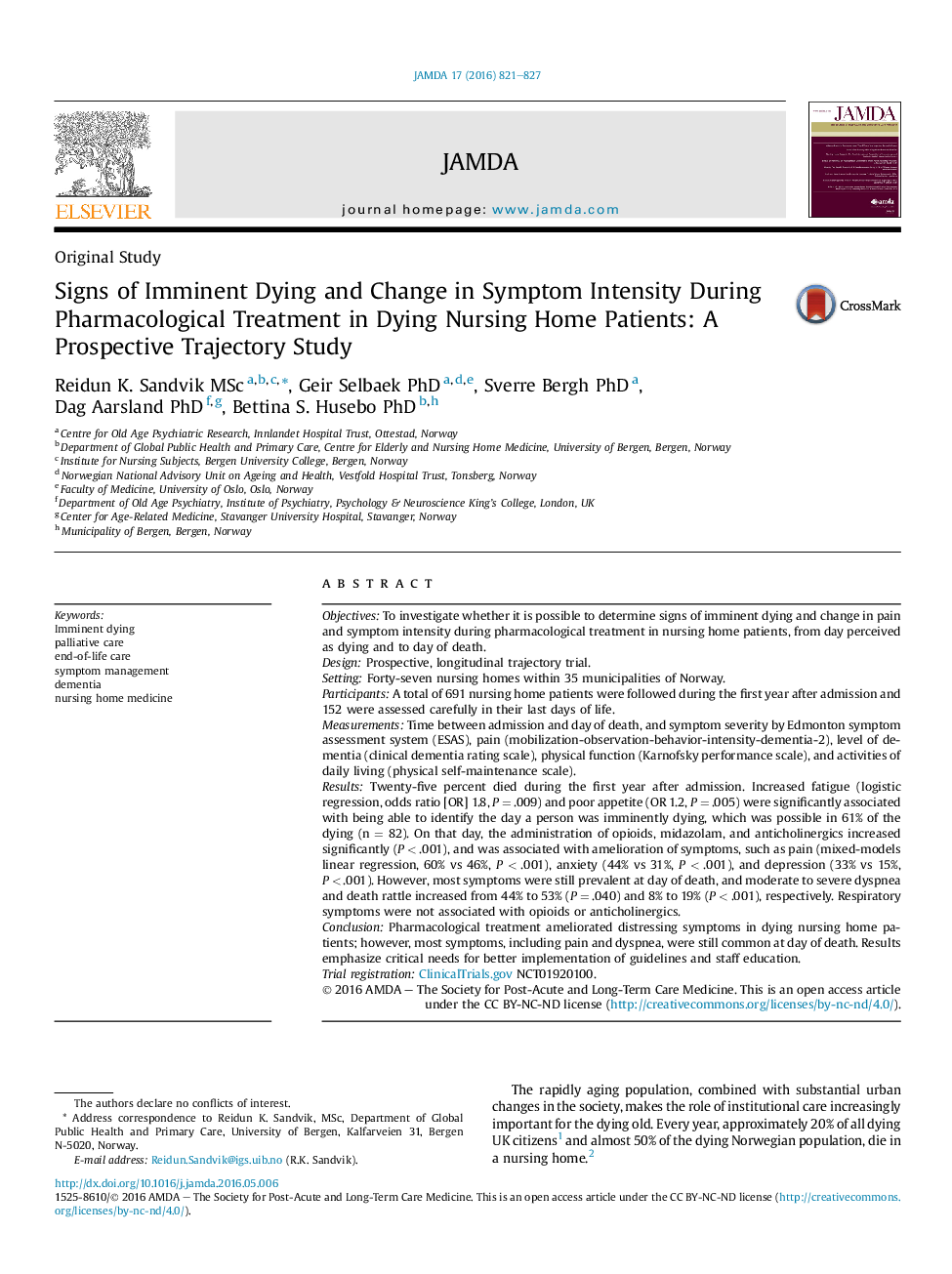| کد مقاله | کد نشریه | سال انتشار | مقاله انگلیسی | نسخه تمام متن |
|---|---|---|---|---|
| 5636915 | 1406694 | 2016 | 7 صفحه PDF | دانلود رایگان |
ObjectivesTo investigate whether it is possible to determine signs of imminent dying and change in pain and symptom intensity during pharmacological treatment in nursing home patients, from day perceived as dying and to day of death.DesignProspective, longitudinal trajectory trial.SettingForty-seven nursing homes within 35 municipalities of Norway.ParticipantsA total of 691 nursing home patients were followed during the first year after admission and 152 were assessed carefully in their last days of life.MeasurementsTime between admission and day of death, and symptom severity by Edmonton symptom assessment system (ESAS), pain (mobilization-observation-behavior-intensity-dementia-2), level of dementia (clinical dementia rating scale), physical function (Karnofsky performance scale), and activities of daily living (physical self-maintenance scale).ResultsTwenty-five percent died during the first year after admission. Increased fatigue (logistic regression, odds ratio [OR] 1.8, P = .009) and poor appetite (OR 1.2, P = .005) were significantly associated with being able to identify the day a person was imminently dying, which was possible in 61% of the dying (n = 82). On that day, the administration of opioids, midazolam, and anticholinergics increased significantly (P < .001), and was associated with amelioration of symptoms, such as pain (mixed-models linear regression, 60% vs 46%, P < .001), anxiety (44% vs 31%, P < .001), and depression (33% vs 15%, P < .001). However, most symptoms were still prevalent at day of death, and moderate to severe dyspnea and death rattle increased from 44% to 53% (P = .040) and 8% to 19% (P < .001), respectively. Respiratory symptoms were not associated with opioids or anticholinergics.ConclusionPharmacological treatment ameliorated distressing symptoms in dying nursing home patients; however, most symptoms, including pain and dyspnea, were still common at day of death. Results emphasize critical needs for better implementation of guidelines and staff education.Trial registrationClinicalTrials.gov NCT01920100.
Journal: Journal of the American Medical Directors Association - Volume 17, Issue 9, 1 September 2016, Pages 821-827
